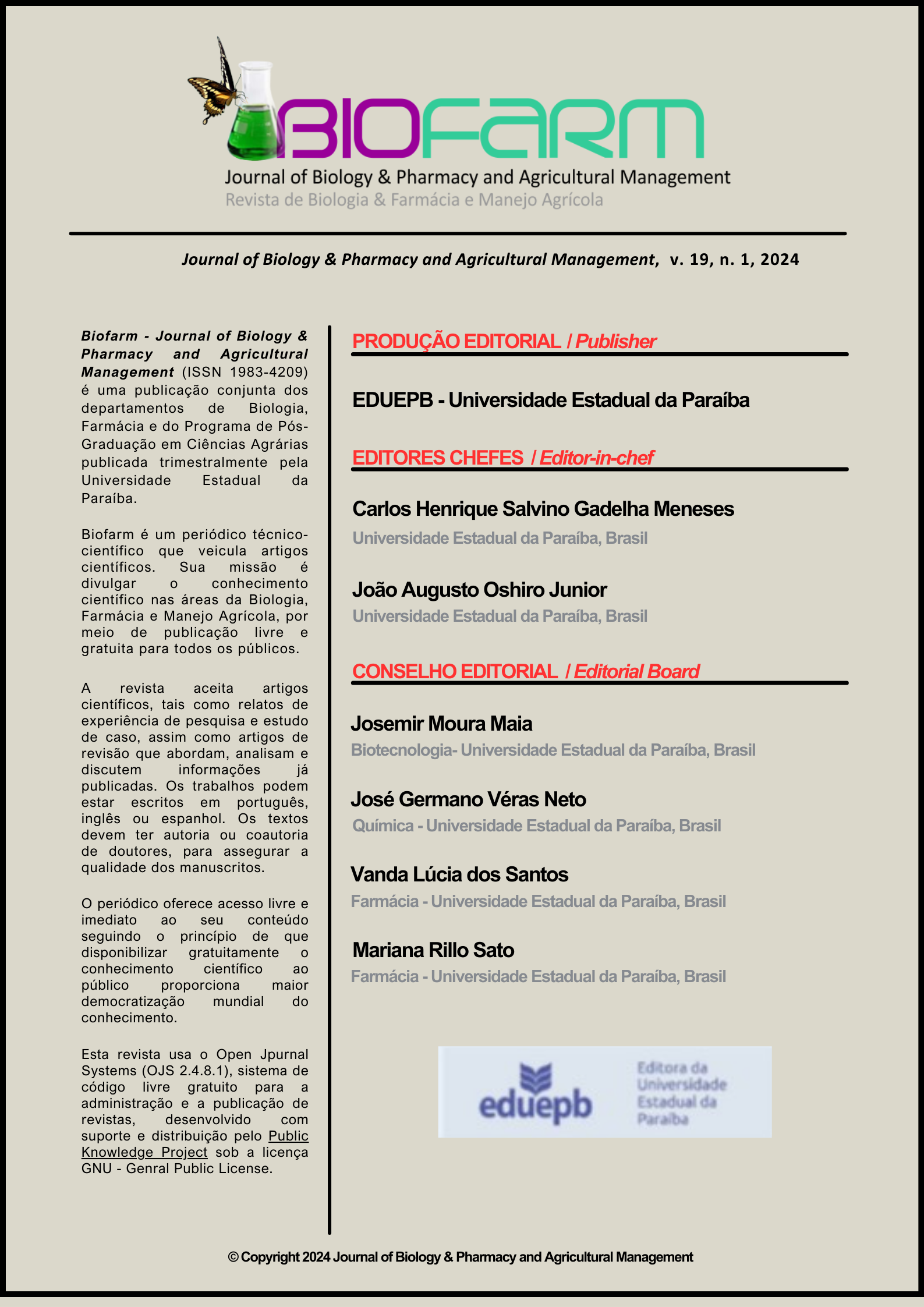Physicochemical characterization and evaluation of equilibrium solubility of fat-soluble and water-soluble vitamins
Abstract
Vitamin D is a fat-soluble vitamin that is crucial for bone health, with its main metabolites being vitamin D2 (ergocalciferol) and vitamin D3 (cholecalciferol). Vitamin B9 (folic acid) is a water-soluble vitamin, which can be found as folate or folic acid, and plays a vital role as a cofactor in DNA synthesis. The solubility of a drug directly influences its pharmacokinetics, impacting its bioavailability and therapeutic efficacy. The objective of this study was to evaluate the solubility of vitamins subjected to physicochemical characterization through thermodynamic and spectroscopic techniques, as well as to assess equilibrium solubility using the shake flask method. The results were positive in thermal and spectroscopic analyses. During the evaluation of equilibrium solubility, folic acid and vitamin D3 degraded in acidic buffers, simulated gastric fluid without enzymes (SGFNE), and acetate buffer (AB), with quantification possible only in the simulated enteric juice buffer without enzyme (SEJNE). The solubility of folic acid in the SEJNE buffer was determined to be 1.07 mg/mL, and the time to reach equilibrium was 9 hours. The solubility of vitamin D3 was calculated to be 0.00109 mg/mL, reaching equilibrium in 3 hours.
Downloads
Published
How to Cite
Issue
Section
License
Copyright (c) 2024 BIOFARM - Journal of Biology & Pharmacy and Agricultural Management

This work is licensed under a Creative Commons Attribution 4.0 International License.
Authors and co-authors retain copyright, but cede the right to first publication to the Journal of Biology & Pharmacy and Agricultural Management (BIOFARM).
Copyright encompasses exclusive rights to reproduce and deliver the article in all form and media, including reprints, photographs, microfilms and any other similar reproductions, as well as translations. The reproduction of any part of this journal, its storage in databases and its transmission by any form or media - such as electronic, electrostatic and mechanical copies, photocopies, recordings, magnetic media, etc. - will be allowed only with a written permission from the BIOFARM.
Articles published in BIOFARM will be Open-Access articles distributed under the terms and conditions of the Creative Commons Attribution License (CC BY). The copyright is retained by the author(s). BIOFARM will insert the following note at the end of the published text:
© 2023 by the authors; licensee BIOFARM, Campina Grande, Brazil. This article is an open access article distributed under the terms and conditions of the Creative Commons Attribution License (http://creativecommons.org/licenses/by/4.0/).


